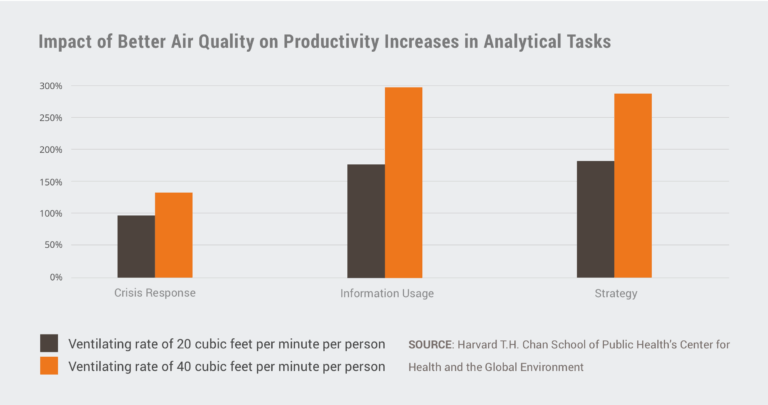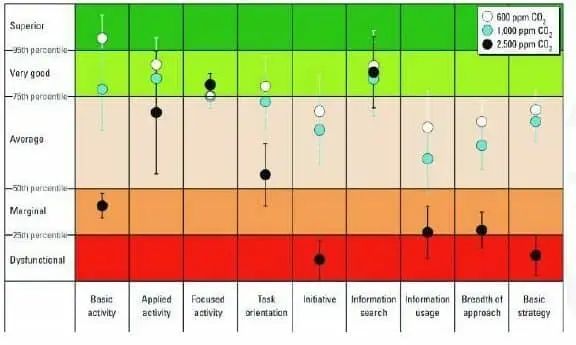
The RESET Air Standard is the world’s first sensor-based and performance-driven data standard and certification program for the built environment. RESET is a set of standards and assessment tools & services to develop actionable, long-term strategies towards health and sustainability for the built environment. The RESET Standard creates a structure for data quality, continuous monitoring, and benchmarking. The standard harnesses the power of technology in order to assess the performance of buildings and interior spaces during their operational phase.
At Watkins Payne, we offer RESET Air assessment which aims to ‘make visible the invisible factor’ that impacts health, productivity, and sustainability in indoor spaces.
Continuous monitoring of air quality during occupancy hours creates a holistic picture of your project’s air quality, through measuring of parameters including PM2.5, TVOC, CO2, CO, temperature and humidity.

Offices can be air-tight spaces. Therefore, CO2 can be a concern. CO2 can significantly impact productivity and decision-making capabilities.
To equate ventilation rates with CO2 concentration:
– Ventilation rates of 20 cubic feet per minute/person, which equates to indoor CO2 concentrations of approximately 945 ppm (based on an average)
– Ventilation rates of 40 cubic feet per minute/person, which equates to indoor CO2 concentrations of approximately 550 ppm (based on an average)
It is not uncommon to find indoor spaces that average over 1,400 ppm[1] of CO2 concentration.

[1] Allen, J.G. et al. Associations of Cognitive Function Scores with Carbon Dioxide, Ventilation, and Volatile Organic Compound Exposures in Office Workers: A Controlled Exposure Study of Green and Conventional Office Environments. June 2016.
Occupants feel most comfortable and perform the best within CO2 levels of 600 ppm or less[1].
Once the levels are higher, occupants start to experience light headaches, slight fatigue, and difficulty concentrating [2] negatively affecting performance [1].
Occupants begin displaying unsatisfactory performance[1], with significant impairment of cognitive functions across specific tasks, especially when indoor CO2 levels reach 2,500 ppm, for 2.5 hours or more[2].

[1] Satish, U. et al. Is CO2 an Indoor Pollutant? Direct Effects of Low-to-Moderate CO2 Concentrations on Human Decision-Making Performance. [Website]. December 2012.
[2] Bierwirth, P.N. Carbon dioxide toxicity and climate change: a serious unapprehended risk for human health. [Website]. December 23, 2016.
RESET addresses data quality at the source and specifies requirements for the monitors and the deployment methodology in a project. RESET also makes sure the data is trusted and relevant by requiring monitors to be installed in the right way and to have plans for long term maintenance. Lastly, RESET sets requirements for how the data is reported and connected to guarantee transparency and access via analysis and reporting.
